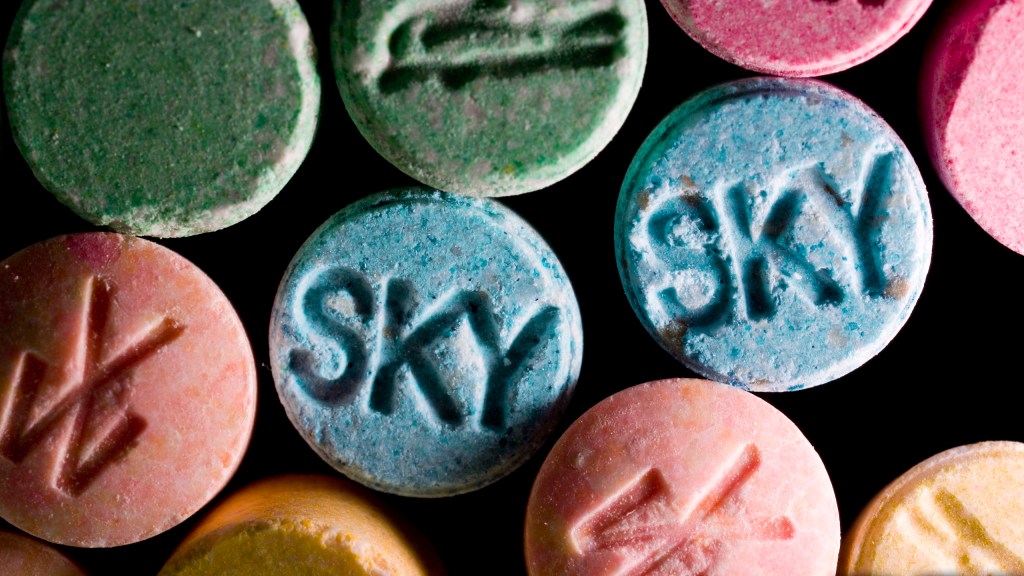The 2016 Global Drug Survey (GDS) has found that MDMA, commonly known as ecstasy, is increasing in quality but also in dosage, leading researchers to say this is “the worst time to be using MDMA in a generation”.
The GDS, which independently collected data from 50 different countries over three months, also collated anonymous surveys which were taken by over 100,000 people (including almost 5,000 Australians) in order to learn about the state of the drug market in 2016.
This year’s GDS has found that use of MDMA is on the rise, and there’s never been more of the drug available globally than there is right now.
What’s more, the quality of today’s MDMA is also increasing, but that’s not necessarily a good thing when it comes to reducing potential harm.
Speaking with triple j‘s ‘Hack program’, GDS co-author Dr Monica Barratt from the National Drug and Alcohol Research Centre at UNSW says that because today’s MDMA pills are so pure, they usually contain pretty high doses of the drug.
“At the moment, globally and especially in the UK, MDMA pills seem to contain one of the highest doses that they’ve ever contained,” she says. “Some pills contain 250 milligrams, up to 300 milligrams of MDMA.
“For people that aren’t aware of strengths of those pills that they might be taking, perhaps as novice users, they’re more likely to come to harm by just taking one pill than they would have in earlier years — when pills tended to be 80 to 100 milligrams, so two or three times less the amount of active drug per pill.”
Despite MDMA’s purity being on the up, Dr Barratt says it isn’t a sign that MDMA is getting safer.
“I can see that some people would say, ‘maybe it’s the best time to start taking MDMA’, but the reason why it could be the worst [time] is that people don’t know the dose. That’s the problem,” she says.
“If you’re 17 or 18 and just starting to use these drugs, you could actually get a very strong product which could lead to overdose.”
This year’s GDS found there’s been jump in the number of Australian ecstasy users who have sought emergency medical treatment in the last 12 months. In 2015 it was 0.4 per cent of users, but this year it has more than doubled to 1.1 per cent of users, leading the authors of the survey to say “less is more fun” when it comes to MDMA.
“I don’t think people respond to those generic messages of ‘don’t take drugs’,” says Dr Barratt, who believes that telling users to start with half a pill is an easy way to reduce harm. She also thinks Australia should seriously look at implementing pill testing at events like music festival.
“I think it’s a sensible response to look into trialling harm reduction strategies like pill testing in Australia. We have indicative evidence of pill testing from other parts of the world, so it’s a promising intervention,” she says.
In December 2015, a Music Feeds poll found that 83 per cent of over 10,000 respondents were in favour of Australian festivals introducing drug testing procedures at their events.
Since then, a group of politicians and health experts have teamed up to demand pill testing and an overhaul of Australian drug laws, while some senior police and politicians are reportedly backing pill testing trials at Australian music festivals set for later this year.
Aside from its findings on MDMA, this year’s Global Drug Survey also found that cocaine and nitrous oxide use is increasing, while synthetic cannabinoids are definitely more dangerous than any other drug on the market.
To check the results for yourself, catch the summary video below or head to the Global Drug Survey website.
Watch: Global Drug Survey Results 2016











